- Home
- Wild plants
- Woody plants
- Climbers
- Bryony
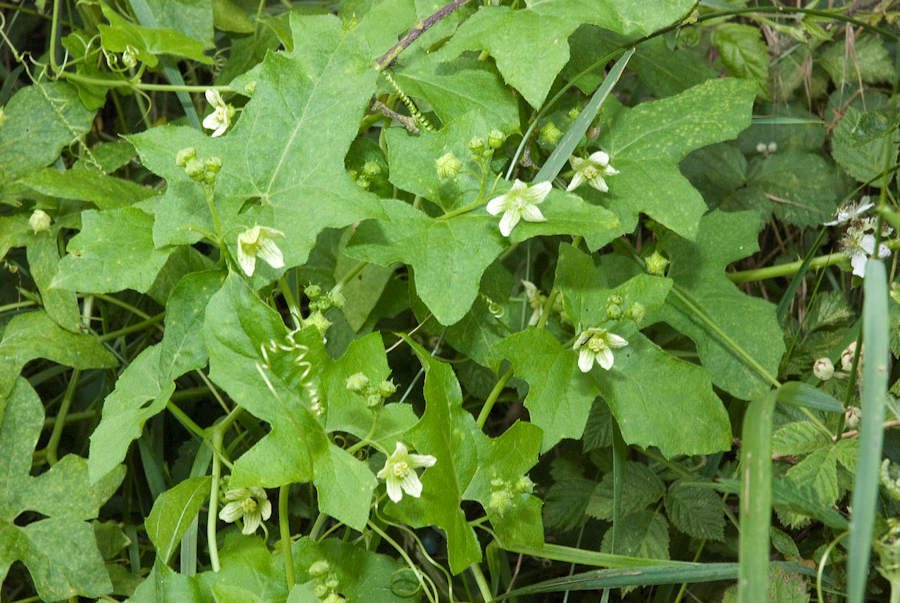
.jpg)

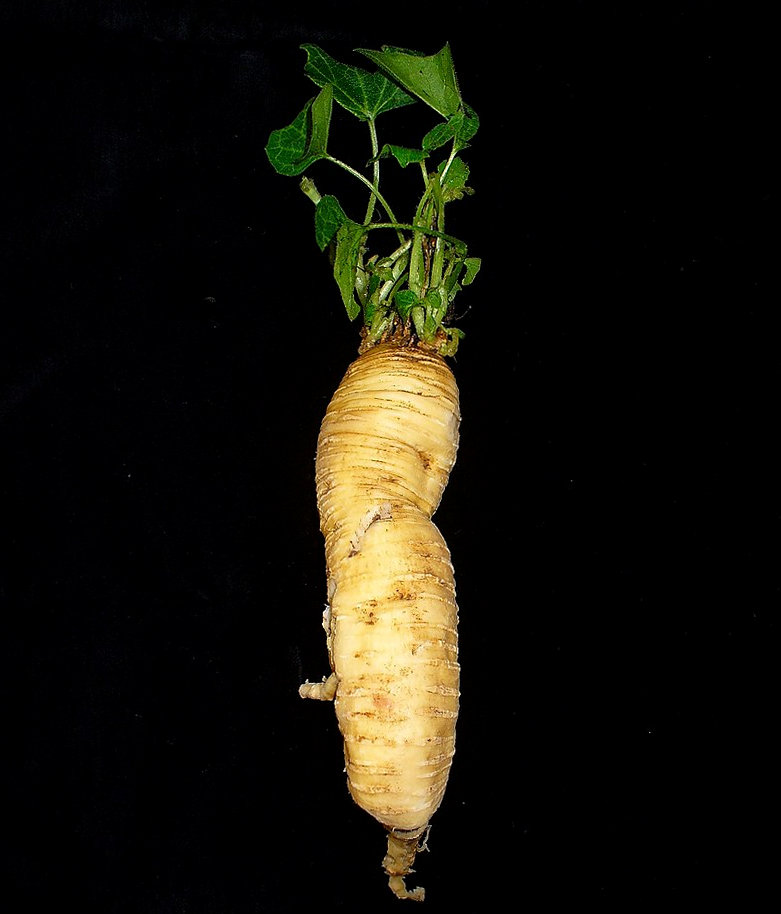
.jpg)
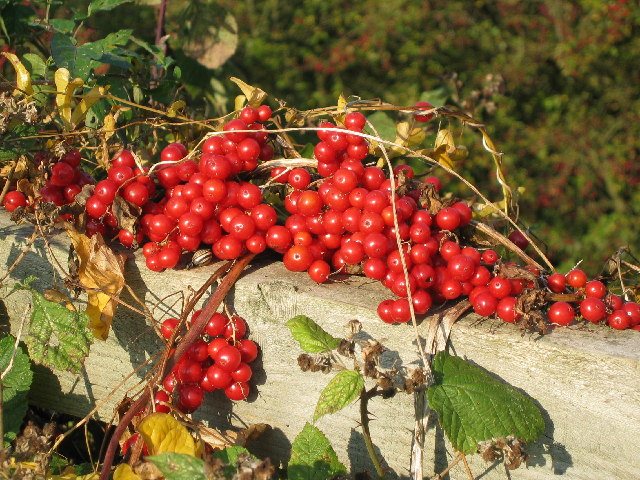
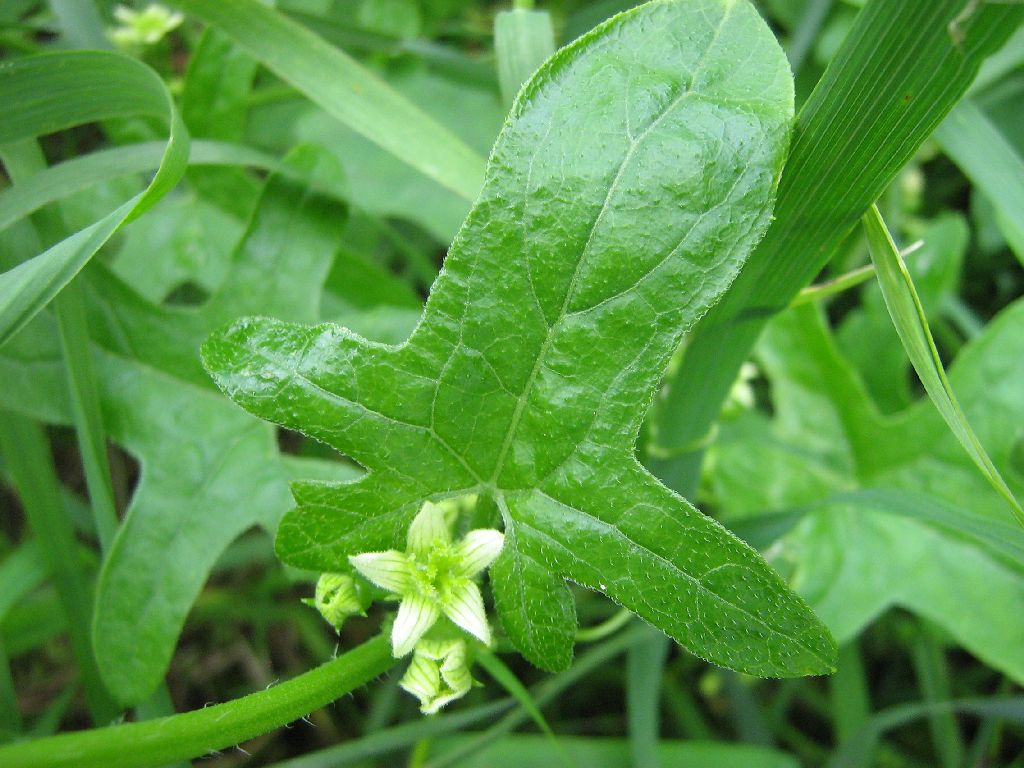
White bryony and black bryony
We have two native species referred to as “bryony” but they are completely unrelated and each is the only native member of its family in Britain and Ireland. Each is toxic, and neither are deliberately grown in gardens, but we have included them because they are often brought in as seeds by birds. They are superficially similar plants but can be distinguished by their leaves and climbing mechanisms.
White bryony Bryonia dioica
Climbs to: 4m
Flowers: May to August
Fruit: Autumn and winter
White bryony sends many stems up every year from what can grow to be a massive tuber weighing several kilos. The plant is a fast-growing rambling climber using spiralling tendrils to cling on, in a similar way to grape vines, and can smother shrubs in an unsightly way. Digging out the tuber is a big undertaking, as they are often surrounded by roots of the shrub up which they are growing. The leaves are palmate with five lobes, the flowers are small and greenish, and it produces bright red berries in the autumn. All parts are acrid and poisonous.
Flowers, fruits and tuber of white bryony Bryonia dioica
Black Bryony Tamus communis
Family: Dioscoreaceae Yam family
Climbs to: 3m
Flowers: May to July
Fruit: Autumn and winter
Black bryony climbs by clockwise twisting stems like honeysuckle (bindweed twists anti-clockwise). The leaves are heart-shaped and pointed. It also has inconspicuous small greenish flowers, and abundant bright red fruits in the autumn. The root forms a cylindrical tuber up to 8cm long and 3cm wide.
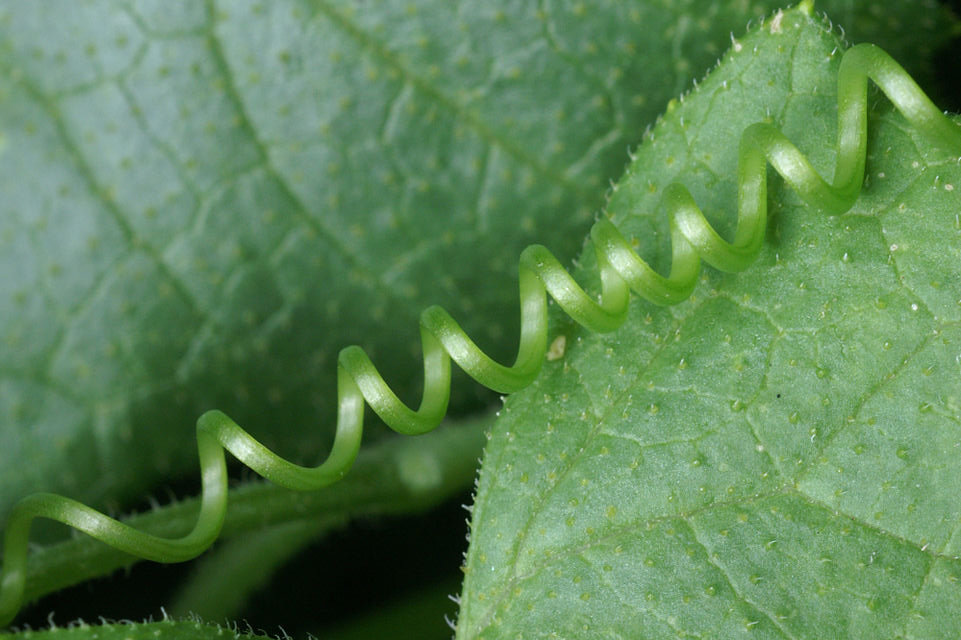
Distinguishing the two species
On the left below are 5-lobed palmate leaves and spiral tendrils of white bryony. The leaf of black bryony on the right is heart shaped and pointed, and the plant twines to climb, without tendrils.
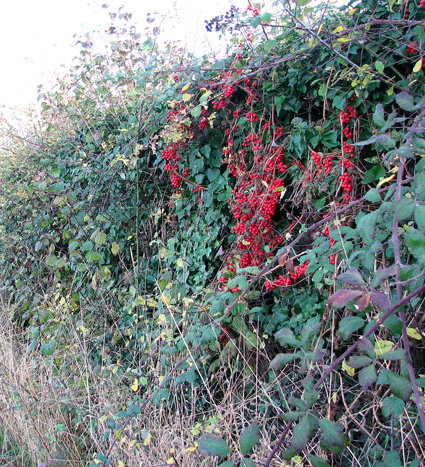
History and uses
White Bryony was first recorded by William Turner in 15481. , and black bryony soon after by John Gerrard in 15972.. White bryony has many local names including ache, Canterbury Jack, dead creepers and “woman drake”3. in contrast to black bryony which is known locally as “mandrake”, black bindweed and adder’s meat.4. True mandrake Mandragora officinarum is a Mediterranean species related to deadly nightshade.
Both bryony species are too poisonous for general use, and white bryony’s powers as a laxative are described as “explosive”. Black bryony berries steeped in gin are said to be good for chilblains4.. White bryony roots often grow “arms and legs” to resemble the human form, and in the fenlands, those most resembling a female form were taken to pubs and compared, and the most rudely suggestive stored until a better one was found3..
Associated species
Both are dispersed by birds. Very few species eat either plant, but white bryony is the basic foodplant of a gall midge Jaapiella bryoniae5.. Black bryony likewise is the sole host of the gall midge Schizomyia tami6. .
References
1. Pearman, D. 2017. The Discovery of the Native Flora of Britain and Ireland. BSBI, Bristol. p121
2. Pearman, D. 2017 The Discovery of the Native Flora of Britain and Ireland. BSBI, Bristol. p392
3. Vickery, R. 2019. Vickery’s Folk Flora, An A to Z of the Folklore and Uses of British and Irish Plants. Weidenfeld & Nicolson. London. p699
4. Vickery, R. 2019. Vickery’s Folk Flora, An A to Z of the Folklore and Uses of British and Irish Plants. Weidenfeld & Nicolson. London. p70
5. Biological Records Centre database
6. Biological Records Centre database
Page written and compiled by Steve Head
White bryony and black bryony
We have two native species referred to as “bryony” but they are completely unrelated and each is the only native member of its family in Britain and Ireland. Each is toxic, and neither are deliberately grown in gardens, but we have included them because they are often brought in as seeds by birds. They are superficially similar plants but can be distinguished by their leaves and climbing mechanisms.

.jpg)


Flowers, fruits and tuber of white bryony Bryonia dioica


Distinguishing the two species
On the left below are 5-lobed palmate leaves and spiral tendrils of white bryony. The leaf of black bryony on the right is heart shaped and pointed, and the plant twines to climb, without tendrils.

.jpg)

History and uses
White Bryony was first recorded by William Turner in 15481. , and black bryony soon after by John Gerrard in 15972.. White bryony has many local names including ache, Canterbury Jack, dead creepers and “woman drake”3. in contrast to black bryony which is known locally as “mandrake”, black bindweed and adder’s meat.4. True mandrake Mandragora officinarum is a Mediterranean species related to deadly nightshade.
Both bryony species are too poisonous for general use, and white bryony’s powers as a laxative are described as “explosive”. Black bryony berries steeped in gin are said to be good for chilblains4.. White bryony roots often grow “arms and legs” to resemble the human form, and in the fenlands, those most resembling a female form were taken to pubs and compared, and the most rudely suggestive stored until a better one was found3..
Associated species
Both are dispersed by birds. Very few species eat either plant, but white bryony is the basic foodplant of a gall midge Jaapiella bryoniae5.. Black bryony likewise is the sole host of the gall midge Schizomyia tami6. .
References
1. Pearman, D. 2017. The Discovery of the Native Flora of Britain and Ireland. BSBI, Bristol. p121
2. Pearman, D. 2017 The Discovery of the Native Flora of Britain and Ireland. BSBI, Bristol. p392
3. Vickery, R. 2019. Vickery’s Folk Flora, An A to Z of the Folklore and Uses of British and Irish Plants. Weidenfeld & Nicolson. London. p699
4. Vickery, R. 2019. Vickery’s Folk Flora, An A to Z of the Folklore and Uses of British and Irish Plants. Weidenfeld & Nicolson. London. p70
5. Biological Records Centre database
6. Biological Records Centre database
Page written and compiled by Steve Head
White bryony sends many stems up every year from what can grow to be a massive tuber weighing several kilos. The plant is a fast-growing rambling climber using spiralling tendrils to cling on, in a similar way to grape vines, and can smother shrubs in an unsightly way. Digging out the tuber is a big undertaking, as they are often surrounded by roots of the shrub up which they are growing. The leaves are palmate with five lobes, the flowers are small and greenish, and it produces bright red berries in the autumn. All parts are acrid and poisonous.
Black Bryony Tamus communis
Climbs to: 3m
Flowers: May to July
Fruit: Autumn and winter
Black bryony climbs by clockwise-twisting stems like honeysuckle (bindweed twists anti-clockwise). The leaves are heart-shaped and pointed. It also has inconspicuous small greenish flowers, and abundant bright red fruits in the autumn. The root forms a cylindrical tuber up to 8cm long and 3cm wide.






